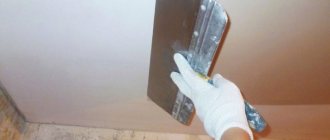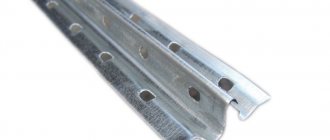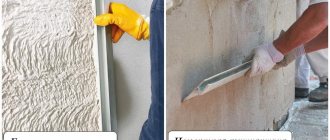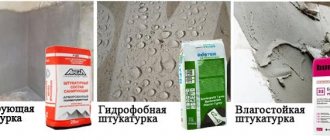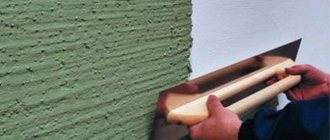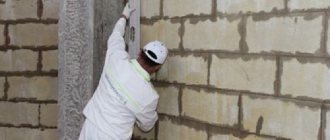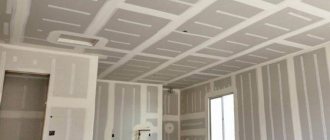Silicone plaster is used quite often today in the design of facades. This is due to its excellent technical characteristics and excellent ability to cope with facade leveling. This finish can stretch well, so cracks do not appear on its surface even when the house shrinks. This means that finishing the facade with such material can be carried out immediately after construction.
Technical characteristics and composition
Silicone facade plaster contains the main ingredient of the same name with all its inherent characteristics. Among them, we should highlight high elasticity and the ability to withstand critically low and high temperatures, which makes the product suitable for outdoor use under difficult conditions.
In order to give the mixture a tint, a pigment is added to its components, which withstands exposure to the sun well. Over time, it does not fade, and the electric light of street lamps does not have a negative effect on it. The composition also contains additives, each of which is designed to perform its own functions, for example, to protect the finish from fungus and mold.
What is the difference between silicone plaster for facades?
First of all, silicone plaster for facades has several types. The most popular are the following:
- Silicone bark beetle plaster is distinguished by its design. The surface of such a facade will have grooves that are located vertically or horizontally. They resemble small channels that small bugs made in the bark. To level the surface, use a plastic trowel or a special grater.
- Silicate-silicone decorative plaster “fur coat” is distinguished by a layer that has a rough surface;
- Plaster fur coat decor silicone has a very interesting type of texture. When applied, the wall becomes rough and voluminous. The work is carried out with a finishing mixture that differs in fraction size from 1.5 to 2.5 mm. Compositions with smaller fractions are used for interior decoration.
The final appearance of the completed work will be different from the work done during the application of raw materials and grouting.
Silicone decorative plaster is easy to use. Most often it goes on sale completely finished. It does not need to be pre-prepared for future use.
Varieties
Silicone facade plaster can give the facade a unique look, because it can be applied in different textures, which divide this mixture into separate types. It could be a lamb or a bark beetle. If necessary, you can create a fur coat effect, which is one of the easiest to achieve, making it suitable for construction beginners. The Venetian texture is also well known.
Another type is a silicate-silicone mixture, which can be presented in different modifications. The difference between the material is that potassium glass is added during its production. This makes silicone plaster resistant to various difficult conditions, for example, low temperatures.
Composition of silicone plaster
The finish contains silicone resins, which are the main component. Compared to acrylic mixtures, it has a greater degree of elasticity. It stretches great.
On the surface of such a façade the risk of cracks appearing is minimal. It is suitable as finishing for a wooden building. In the event that you need to get a certain color scheme. You can get the desired shade using a color scheme. The surface of the house does not require additional care. Any finishing solution for external work has important dust-repellent properties.
The use of finishing raw materials based on resins has a number of advantages. An important advantage of silicone facade plaster is its amazing durability. Not only does it not become covered with a layer of dirt, it is resistant to rain and snow and does not fade in the sun. Fungus and mold do not form on the walls. In addition, it has no odor.
Advantages and disadvantages
Silicone plaster has advantages and disadvantages. Among the advantages are elasticity and the ability to withstand moisture. All this would seem to contradict the vapor permeability, but this cannot be taken away from this plaster for exterior use. After application, the pebble silicone mixture or any other texture based on this base will not shrink. During application and after drying, the facade will have no odor. There are no harmful substances among the ingredients, so the product is completely harmless. It is not a fire hazard, which is often especially appreciated by owners of one-story detached houses.
When choosing plaster, consumers also consider other alternatives, but their technical characteristics often do not meet the requirements, for example, the compositions attract dirt. But the silicone mixture is also called self-cleaning, which manifests itself during rain. Salts do not penetrate into the composition, so white spots cannot appear on the surface, making the walls less attractive.
In some climatic zones, for this reason, certain facing materials cannot be used.
You should not be afraid that biological pests will appear on silicone plaster. Mold and mildew are not afraid of such a mixture. It, among other things, also retains heat, providing the walls with thermal insulation properties. Silicone plaster, like any other material, has its drawbacks. Here one of them is expressed in high cost. The disadvantages include the complexity of dismantling work.
Advantages and disadvantages
The list of materials to which silicone plaster can be applied is extensive. At the same time, we must not forget that on smooth surfaces the composition can roll off.
When working, you can highlight a number of advantages of this tool:
- Long service life. Silicone does not lose its properties for a long time. It can last over twenty years without changing its technical characteristics;
- Elasticity. This property makes it possible to compensate for changes in the geometric parameters of building elements caused by shrinkage. The coating does not crack under any type of deformation;
- Moisture resistance. The product repels moisture, preventing it from penetrating into the base. The mentioned quality protects the facade of the house from adverse weather conditions, and the internal walls from moisture;
- Strength. The coating surface is resistant to mechanical damage, which affects the service life and the need to update the material;
- Vapor permeability. The solution prevents the accumulation of condensation, and walls covered with decorative plaster breathe. Thanks to the thoughtful composition, mold does not form;
- Disinfectant properties. Silicone plaster applied to the wall demonstrates cleanliness and allows you not to worry about the presence of dirt. The mixture prevents the spread of bacteria and has dirt- and water-repellent properties;
- Operation in any conditions. Silicone is unpretentious and can be used during temperature fluctuations, with constant exposure to water or ultraviolet radiation;
- Resistance to low temperatures. The material can be periodically frozen, and after defrosting, it does not lose its original qualities;
- Low flammability. The composition almost does not support combustion and belongs to class G1;
- Safety. The product does not contain substances that can be harmful to health and can be used in children's educational institutions. The environmentally friendly mixture does not pose a threat to the environment;
- Easy to use. When applied, silicone plaster does not require professional skills or complex equipment. A person without special knowledge, with practice, is able to cope with the finishing decorative coating.
Next, consider the disadvantages of the building material:
- High price. Finishing work will require considerable financial costs;
- Difficulties in removing the composition. It's difficult to get rid of boring coating.
Technique for applying silicone plaster
Silicone plaster is easy to use. It is sold ready-made, so before starting work you just need to mix it well. To do this, you can use a drill with an attachment. You just need to turn on the tool at low speed. Since the material is ready for use, there will be no lumps in it, which often occurs when mixing on your own and incorrect proportions.
If the composition has an insufficient viscosity level, it is necessary to add some water to it. The work is carried out manually or by machine. In the first case, you should stock up on a spatula. If possible, it is better to avoid steel tools when working, as they can leave traces of rust on the surface. If possible, try to form one layer. This will reduce mixture consumption. If the area of the external walls is quite impressive, you may encounter overspending of the mixture and money. To save money, you can cover only the front part of the house with plaster.
Application can be carried out by spraying, this allows you to achieve perfect adhesion. To form the thinnest possible layer, a spatula is suitable, which, when distributing the mixture, is held in relation to the surface at an angle of 60 degrees. If you have a gun, you can mechanically spread silicone plaster in a short time and in the thinnest possible layer. The tool must be held at an angle of 90 degrees.
If desired, the mixture can be rubbed after drying. To do this, use rubber or plastic graters. You can move them in a circle or chaotically. This will allow you to get the appropriate pattern. If the texture should appear in the form of stripes, then the surface should be practically fresh. In your work, you can use a composition with a base color, and after drying, paint it. For this, light shades are used. If desired, you can highlight individual architectural elements. At this stage, dark colors are used.
Surface preparation
Silicone plaster is applied to the prepared base. It must be cleaned mechanically if there are elements that impede the distribution of the mixture. It is also better to get rid of dust and dirt, as well as grease stains. It is important to inspect the wall; there should be no deep depressions or cracks on it. If any are found, they are filled with putty. In order to increase the adhesion of the wall, it should be treated with a primer with the same composition.
Although the silicone mixture is capable of filling even small cracks, it is recommended to prepare the facade before applying it. It is leveled to reduce mixture consumption. If deviations exceed 40 mm, the areas are covered with mesh before plastering, which is secured with nails.
Different bases are prepared in different ways. For example, excessively smooth concrete walls need to be covered with notches or metal mesh. When the facade is wooden, it is usually covered with shingles. Brick external walls should be treated in the area of the seams. If at the stage of building a house it is known that the facade will be finished with plaster, the products are placed in a waste area. If you are doing this kind of work for the first time, it is better to install beacons. These can be wooden or metal slats. They are installed along the entire height at a distance of 1.5 m. In this case, the composition will be applied in separate stripes.
If the master has no experience at all, the distance between the slats should be reduced, and it is reduced even more depending on how far the person is from the specifics of such work. In general, the pitch is determined by the length of the grater. This will make leveling the mixture easier. A maximum of two layers are laid between the slats. The final layer is formed over the entire area in one step.
Tool
Silicone plaster, like any other, requires the preparation of a certain set of tools. The main tools of the master are trowels and spatulas. They must be made of stainless steel or plastic. You will need a grater. To prepare the solution, you should find an electric mixer in your arsenal. The tools will have to be washed periodically; for this you will need a container of sufficient volume. If you want to get a textured surface, you should stock up on rollers, sponges or other devices. Sometimes completely unexpected techniques are used, for example, creating texture with rags or gloves.
Application
The described plaster for aerated concrete is excellent. It is not recommended to apply it only to metal surfaces, because they are too smooth and can cause rust on the surface. Otherwise, the application will look exactly the same as in the case of similar facade compositions. You will need a grater and a spatula. The formed layer should not be thicker than the filler fraction.
If silicone plaster is applied in several layers, each of them should be left until completely dry. Leveling the applied mixture is carried out with a grater. Then you can start applying the texture. The silicone mixture is unique in that it allows you to create not only textured reliefs, but also patterns for painting. When carrying out external work, this type of silicone plaster must be protected from direct sunlight. After the facade has been plastered, it is left for a period of 8 hours or more. The polymerization period will depend on the layer thickness and external conditions.
Application technique
It is necessary to thin the plaster if it has dried out and become too viscous. In this case, you need to pour in a little clean water, and then mix the mass with a construction mixer or a drill with an attachment. It is important to carry out all work with silicone-based plaster quickly, as it hardens in a short time. The mixture is easy to apply: it goes on smoothly and does not require repeated smoothing.
Surface preparation
First, you need to remove all peeling plaster or pieces of other old coating, and level the base. Large, deep defects should be repaired using a cement-sand mixture. Immediately before work, the walls need to be cleaned of dust and primed with a deep penetration primer (preferably also silicone-based).
Walls in new houses are usually prepared in this way:
- Small and medium-sized cracks are not sealed, as plaster can easily cope with them.
- If there is a layer of insulation, a reinforcing mesh is applied to it, then a primer, and only then plaster.
- Be sure to eliminate traces of efflorescence, grease stains, soot, and biological damage (fungus, mold).
Before plastering work, the base must be completely dry.
Tools for work
To apply plaster, you should prepare spatulas of different sizes made of plastic or metal, as well as devices for creating the desired texture: construction floats, rollers, sponges. For priming you will need a brush or roller, and to assess the evenness of the surface - a level. To make a drawing or carefully match different shades of plaster, you need to buy masking tape (for pasting borders).
Excess material is removed with a clean rag, and the tools are washed in containers with water, which are also best prepared in advance. If you decide to tint the plaster yourself or add stone chips into it, you should carry out such actions using a construction mixer, since it is impossible to achieve uniform mixing manually.
Application of material
Usually the solution is applied with a spatula or trowel. Movements are carried out vertically. Place a portion of plaster on a large spatula, taking it with a small tool, then transfer the mass to the wall. Spread the composition with a layer of the required thickness (no less than the size of the filler grains, if present). The tool is held at an angle of 60 degrees relative to the base, decreasing the angle when completing the stroke. Excess composition is removed from the spatula and placed back in the bucket.
They usually start work from the corner of the wall and move towards another corner. After filling an area of a certain size, level the plaster with a trowel or other device to give the desired decorative effect. The grater is moved in circular, straight or chaotic movements, without lifting it from the surface. Act quickly to treat the freshly laid layer before setting.
If it is not immediately possible to apply the composition to the entire wall, apply masking tape along the strip of the future joint. The next day, continue plastering without removing the tape: this will help prevent fresh product from getting onto what has already hardened and prevent the appearance of an unsightly thickening.
In addition to the classic manual application of silicone plaster, it is possible to use other techniques:
- sprinkling;
- spraying from a gun.
After the plaster has dried, finishing painting is carried out if the mixture has not previously been tinted. They use special paints of the same shade or make drawings, compositions, or interesting combinations of tones.
Is it possible to paint silicone plaster with silicone paint?
The plaster is ideally combined with silicone and silicate paint compositions, which adhere firmly to it, do not flow, and lay down in an even, smooth layer. Painting work is carried out only after the solution on the wall has completely dried. However, in practice, they try to pre-tint the plaster so that it immediately has the desired color. This will seriously reduce the labor intensity of the process, as well as financial costs.
Safety precautions
Silicone plaster for facades is harmless to humans, but you still need to work with it in compliance with safety measures. If application is carried out mechanically, you must protect your eyes from splashes by wearing glasses. The same is done when treating ceilings with the composition. Before starting wall cladding, it is important to turn off the power to sockets and switches. If the solution gets into the eyes, rinse them with plenty of water.
Consumption of funds
The specific consumption rate is determined by the method of applying the plaster. Usually it is 2.7–3.3 kg/sq. m. The number can be affected by the type of filler, the quality of preparation and evenness of the wall, and the user’s skill level.
Caring for silicone plaster
Due to their strength and chemical resistance, surfaces coated with silicone plaster do not require maintenance. Dirt does not stick to the outdoor surface, and most often there is no need to wash it. In addition, the outer walls will be washed by rain and will always be in an attractive condition. If necessary, you can wash the walls with a regular hose. The cladding in the house is completely washed with water and detergents.
Safety precautions at work
When working with silicone mixture, it is necessary to follow certain safety precautions. You must wear protective clothing and safety glasses. When working externally, remove all sharp metal objects from the surface that could damage the skin when applying silicone plaster or prevent even distribution.
If you work without gloves using plastic tools, you can slightly burn the sharp edges of the handles before work to prevent calluses from forming on the skin. Exterior work with silicone plaster will involve applying the mixture at height. In this case, you should not use unreliable supports in the form of ladders. It is better to have scaffolding and scaffolding.
Silicone facade plaster - the best solution for the home
If this is your first time facing the need to choose a material for exterior facade finishing, we are ready to help you!
After all, we are experts in facade finishing materials. What will be the consequences of your choice? How can you be sure that this is exactly what the facade of your home needs? How to make a purchase profitable in all respects? It’s easy to answer these questions if you know everything about materials and you understand which properties affect what: what determines how long your façade will remain beautiful and without cracks/chips/fading. Today we will explain why silicone plaster is considered the best option in terms of price and quality among all facade decorative plasters.
Silicone plaster is moisture-resistant and vapor-permeable
What does it mean? – The material easily copes with any atmospheric influences. Snow, rain, ultraviolet rays, frost, etc. – silicone plaster has nothing to do with all this if the rules of application technology have been followed.
The vapor permeability coefficient is one of the highest for silicone plaster. This decorative plaster allows the facade to “breathe”, so there is no accumulation of moisture inside it.
Silicone plaster interacts well with all types of insulation: mineral wool, polystyrene foam, etc. If you have already insulated your house and still doubt which finishing option is suitable, then know: silicone plaster is the ideal option.
When choosing silicone plaster, you choose:
– ideal microclimate in the house; – beautiful view of the facade.
Polymer plaster is elastic and abrasion resistant
What does elasticity affect? – The material bends and stretches well, preventing the formation of cracks even during the process of shrinkage of the house. The likelihood of cracks occurring is minimal. And if this does happen, then you can be 98% sure that the reason lies in non-compliance with the rules of application technology.
Silicone plaster is tinted in color using computer tinting
You no longer need to buy paint to paint a plastered facade in the desired color; you no longer need to guess how many drops of color to add to get the desired result. The computer will do everything for you - we give a 100% guarantee that it will match the color of your choice.
You can choose from over 2500 colors. Silicone plaster can be tinted in any color according to the NSC, RAL and Tikkuril palettes.
Now all you have to do is apply plaster to the facade and admire the beautiful house. Finally, one of the most important qualities of silicone plaster is its service life of up to 25 years!
The plaster has undergone many tests and studies to ensure it meets the declared quality, and a huge number of positive reviews are the main proof of this.
If you still have questions, order a call on our website and get
a free consultation
from a specialist in facade materials.
Plus, by answering just 6 questions, you'll know how much plaster your home will need and how much it will cost.
We will also tell you:
• the amount of your discount,
• how to get free product samples.
Consumption
The consumption of silicone plaster may vary depending on the thickness of the layer and the consistency of the mixture. On average, this figure is 2.7 kg per square meter. The bark beetle and lamb go to a slightly different volume. The first type of finishing has a material consumption of 3.2 kg per square meter. But pebble will be applied in an amount of 2.5 liters per square meter. Consumption depends not only on the type of silicone plaster, but also on the grain size of the filler, which also determines the thickness of the layer.
Which type of mixture is better: acrylic or silicone?
Acrylic solution is resistant to temperature changes and goes well with various building materials. The resin-based mixture is a unique raw material. Which explains the not too low price.
Silicate-silicone plaster also combines the qualities of silicate and silicone-based solutions. It has proven itself to be excellent, as it has vapor permeability and low water absorption. In addition, it does not get dirty and is not affected by fungi and mold. These types of solutions are used for interior and exterior work. Works great on concrete walls and other types of finishes. Using the color scheme, you can achieve the desired color of the finishing material.
Silicone facade plaster for external use has several types:
- Thus, silicone bark beetle plaster is suitable for finishing facades, for the insulation of which foam plastic was used. It is often applied as insulation;
- Weber silicate-silicone plaster has a universal purpose, it has hydrophobic properties and has a decorative surface. It is applied to the facade in a thin layer. Can be used when finishing various types of openings.
- Silicone plaster baumit silikontop - applied in a thin layer and sold in a paste form. It is decorative and has different textures. It is applied in different ways. Goes well with polystyrene foam, stone wool, and cork.
Recommendations for selection
Before choosing a specific type of silicone plaster, you need to understand the purpose of the composition and its performance characteristics. The silicone-based mixture can have different sizes of stone fractions, it can be granite or marble. They give the façade its characteristic appearance and ensure its strength.
As for texture, for example, a fur coat can be combined with other textures. But sometimes the walls are covered with a single layer, which has one shade, which makes the building more presentable. And for a novice master, this approach will be easier, because the combination of colors and materials presupposes the master’s skills.
What is silicone plaster
Silicone plaster is a material that is made on the basis of silicone resins. The presence of a large number of additives in the composition significantly increases resistance to external factors, and also improves performance. There are silicate-silicone and acrylic-silicone plaster, which combine the best qualities of acrylic, silicone and silicate materials.
Silicone-based mixtures are already ready for use; there is no need to dilute them. The only thing that can be done before starting work is to tint the composition in the required shade. You can also use a standard shade. If you need to change the color, silicone paint is applied to the plaster.
This material is suitable for almost all surfaces: concrete, cement, wood or gas silicate. The exceptions are oil and paint bases.
Manufacturers and cost
If you have definitely decided that you will decorate the aerated concrete walls of your house with silicone plaster, you should also look into the manufacturers. The most popular are Ceresit and Caparol. They are market leaders and their products meet the best quality standards. These German brands successfully combine the reasonable cost of products with the consumer properties of the material.
Another fairly popular manufacturer is Rockwool. You can purchase her silicone plaster for 122 rubles. per kilogram. But the fur coat plaster from is sold for 5200 per bucket. You can buy Ceresit for 2,200 rubles per bucket. WeberExtraClean can be applied with a fur coat or bark beetle effect, and you will have to pay 2,800 rubles for a bucket.
If you want to buy plaster with a base shade, it is better to pay attention to the Kreisel company. It also produces silicate-silicone mixtures, with which you can create the texture of lamb. For lovers of the domestic brand, Bolars products are suitable. It is of good quality and is offered in a wide variety of shades, which allows you to implement bold ideas for exterior design.
Coating Methods
If the consistency of the silicone plaster has become too viscous or has begun to dry out, it can be diluted with clean water to the desired thickness.
The composition should be stirred with a construction mixer or use a drill with a special attachment. Work with silicone composition must be carried out quickly, as it tends to harden quickly.
The coating is applied without much difficulty and does not require additional leveling of the layer.
How to prepare the surface
First of all, before carrying out work it is necessary to properly prepare the surface:
- remove old coating from the wall surface;
- level the base of the walls;
- repair defects using cement-sand plaster;
- clean the surface from dust and dirt;
- apply a primer or primer (silicon-based would be ideal).
Surfaces in new premises are prepared in the following way:
- Minor defects and cracks do not need to be repaired, as the silicone composition will hide them.
- The material for insulating rooms must first be coated with reinforced mesh, then primed, and the next step is to apply plaster.
- It is necessary to remove various contaminants (grease, dust, soot); get rid of fungus and mold, remove efflorescence.
All previous layers must be completely dry before applying the plaster.
Tools for silicone plaster
To work with silicone plaster you will need:
- metal or plastic spatulas of different sizes;
- construction floats, rollers or sponges to create the desired texture on the surface;
- paint rollers and brushes for applying primer;
- level to assess the evenness of the walls;
- masking tape to protect and separate boundaries on surfaces.
To add color or natural stone chips to the mixture, you must use a construction mixer, since it is almost impossible to mix the material correctly by hand.
Excess material should be removed using waste cloth (rags). To wash rollers and brushes, a container of plain water will suffice.
Plaster application process
Trowels and spatulas are used to apply the solution. Movements in work should be smooth and vertical.
The mixture is applied to a large spatula using a smaller tool, and then only transferred to the surface of the wall. The coating layer is applied no thinner than the size of the filler inclusions.
The spatula should be held at an angle of approximately 60 degrees relative to the base of the surface. In this case, the angle should decrease in the final strokes.
If there is any material left on the instrument, it must be put back into the container with the mixture.
The coating is applied from one corner of the wall towards the other. After applying the coating layer, in order to create relief and texture, sponges and construction floats are used, which should be walked over the surface. Movements should be circular, chaotic and fast without leaving the surface, as the material dries quickly.
Painting tape will help avoid joints on the walls. To do this, it is glued at the place where the application of the material currently ends.
When the work continues, the material can be applied over the masking tape, and at the very end of the application work it can be removed.
For silicone plaster, the following methods of application are also used:
- using a construction sprayer;
- sprinkling.
Combination of silicone plasters and paints
The silicone composition works well in combination with paints based on silicones or silicates.
Paints are applied to the surface only after the previous layer of plaster material has completely dried. The paint layer goes on smoothly and without smudges.
To save money and simplify the painting process, it is common practice to immediately add the desired color to the ready-made plaster mixture.
Precautions at work
To work with silicone plaster, you must follow safety precautions.
This includes the use of personal protective equipment, such as goggles, when applying the material using spray equipment, as well as when applying the material to a ceiling surface.
If drops of the solution get into the eyes, they should be rinsed immediately with water. All sockets and switches must be disconnected from electricity before starting work.
Material consumption
Material consumption depends on the evenness of the wall surface, on the quality of the preparatory work, on the type of filling components, as well as on the professionalism of the person who works with this material.
Often, material consumption ranges from 2.7 to 3.3 kg/sq.m.
How to care for silicone plasters
The silicone mixture is not picky in use and care. Since the composition of the material is quite durable and resistant to chemical attack, dirt and dust do not stick to it.
To wash street facades, you can use a hose with water pressure. The surface of the walls indoors can be washed using cleaning products.
Caring for silicone plaster
Aerated concrete cannot be left unfinished, so it is often finished with plaster. The service life of such a facade is significantly extended, and its appearance can be unsurpassed. After all, the material is offered in different colors. Plaster is sold in convenient buckets, the volume of which can be completely different. Aerated concrete blocks will not have to be maintained if they are finished with silicone-based plaster. It may not require any maintenance at all, but if you notice dirt, you can walk over the surface with a damp sponge. If the aerated concrete was not only plastered, but also painted, the facade can be washed using chemicals.
What is silicone plaster
Silicone plaster is a construction mixture made from synthetic silicone resins. Thanks to the presence of silicone in the composition, the mixture takes on all the properties of the latter: high plasticity, the ability to give any shape and excellent adhesion to most building materials. Similar characteristics are difficult to find in other compositions, so silicone plaster is unique in its kind.
Silicone-based products are sold ready-made and do not require dilution. Most of the compositions are grayish or white in color, and are easily tinted. In addition, after drying, the coating can be painted with some types of paints that adhere well to silicone.
To improve technical parameters and impart certain properties, modifiers, additives, and antifungal components are also introduced into the composition of the products.
Painting silicone plaster
Despite the abundance of color mixtures, sometimes it is difficult to choose the right color. In this case, experts recommend choosing white coatings. Silicone decorative plaster for interior decoration of walls or building facades can be painted. With the correct selection of façade paints and varnishes, the film will increase the moisture resistance of the plaster finish.
Some types of paint are preferable:
- Acrylics form a matte polymer film that hardens after drying;
- Silicone ones adhere well to the plaster layer;
- Silicate ones are wear-resistant.
It is better not to use mineral oil and alkyd coatings; they adhere less well to the plaster layer, and bubbles may form.
Facade paints retain their properties over a wide temperature range and are not afraid of high humidity and negative temperatures. If you can't find the color you want, you can buy white paint. Automatic tinting produces any shade.
Facade paints retain their properties over a wide temperature range and are not afraid of high humidity and negative temperatures.
Now about paints for interior work. These are water-based, latex and acrylic materials. The water-based emulsion is applied in two layers, giving it a matte finish. Acrylic and latex are applied in a thin layer; such coatings are necessary in the kitchen and bathroom – areas of high humidity.
Using paints, the effect of depth of color is achieved. The tone of the paintwork should be slightly lighter than that of the plaster layer.
Using paints, the effect of depth of color is achieved.

